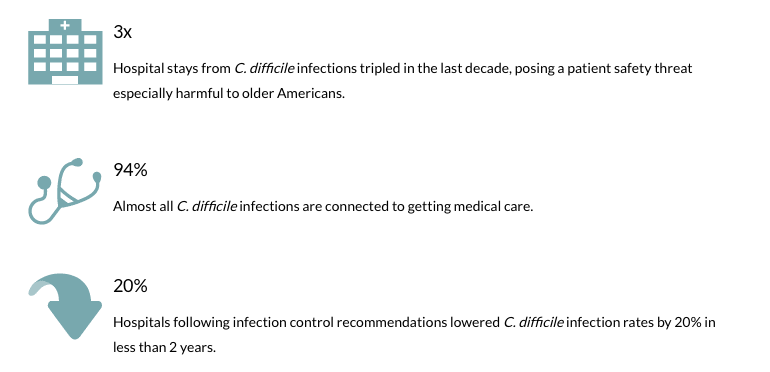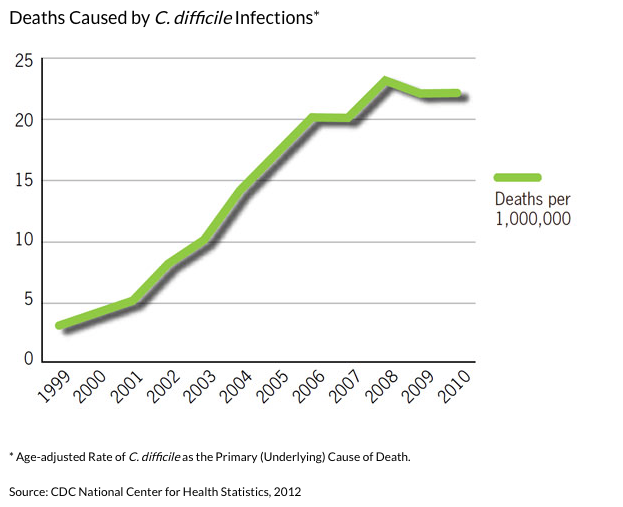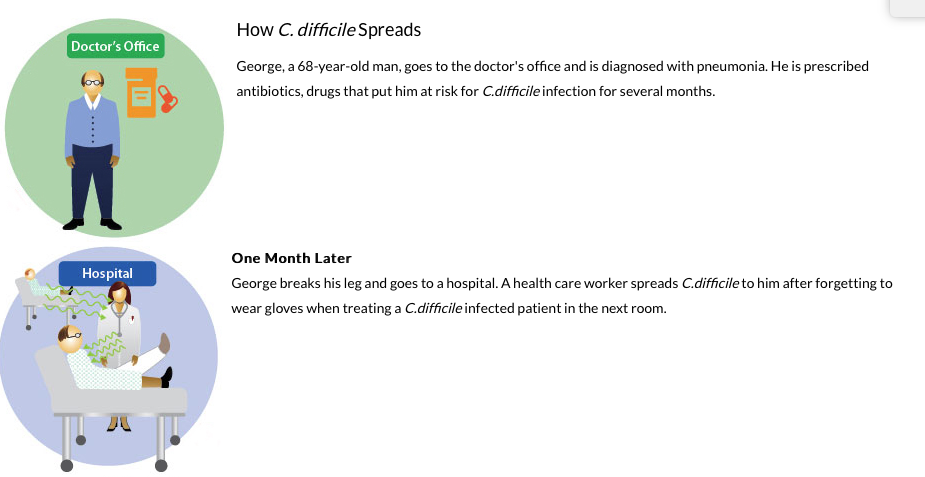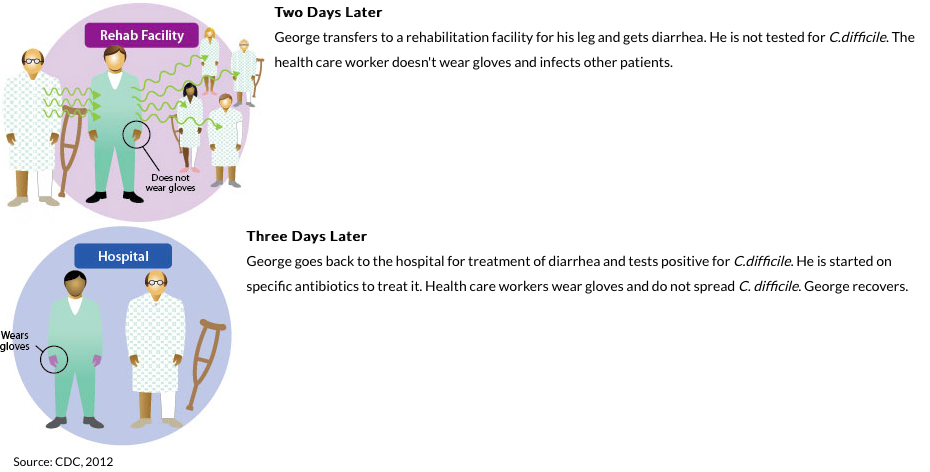
People getting medical care can catch serious infections called health care-associated infections (HAIs). While most types of HAIs are declining, one – caused by the germ C. difficile* – remains at historically high levels. C. difficile causes diarrhea linked to 14,000 American deaths each year. Those most at risk are people, especially older adults, who take antibiotics and also get medical care. When a person takes antibiotics, good germs that protect against infection are destroyed for several months. During this time, patients can get sick from C. difficile picked up from contaminated surfaces or spread from a health care provider’s hands. About 25% of C. difficile infections first show symptoms in hospital patients; 75% first show in nursing home patients or in people recently cared for in doctors’ offices and clinics. C. difficile infections cost at least $1 billion in extra health care costs annually.
C. difficile infections are at an all-time high.
• C. difficile infections are linked to 14,000 deaths in the US each year.
Deaths related to C. difficile increased 400% between 2000 and 2007, due in part to a stronger germ strain.
• Most C. difficile infections are connected with receiving medical care.
• Almost half of infections occur in people younger than 65, but more than 90% of deaths occur in people 65 and older.
• Infection risk generally increases with age; children are at lower risk.
• About 25% of C. difficile infections first show symptoms in hospital patients; 75% first show in nursing home patients or in people recently cared for in doctors’ offices and clinics.
C. difficile germs move with patients from one health care facility to another, infecting other patients.
• Half of all hospital patients with C. difficile infections have the infection when admitted and may spread it within the facility.
• The most dangerous source of spread to others is patients with diarrhea.
• Unnecessary antibiotic use in patients at one facility may increase the spread of C. difficile in another facility when patients transfer.
• When a patient transfers, health care providers are not always told that the patient has or recently had a C. difficile infection, so they may not take the right actions to prevent spread.
C. difficile infections can be prevented.
• Early results from hospital prevention projects show 20% fewer C. difficile infections in less than 2 years with infection prevention and control measures.
• England decreased C. difficile infection rates in hospitals by more than half in 3 years by using infection control recommendations and more careful antibiotic use.

Who’s At Risk



What Can Be Done
• Support better testing, tracking, and reporting of infections and prevention efforts.
• Make sure cleaning staff follows CDC recommendations, using an EPA-approved, spore-killing disinfectant in rooms where C. difficile patients are treated.
• Notify other health care facilities about infectious diseases when patients transfer, especially between hospitals and nursing homes.
• Participate in a regional C. difficile prevention effort.

